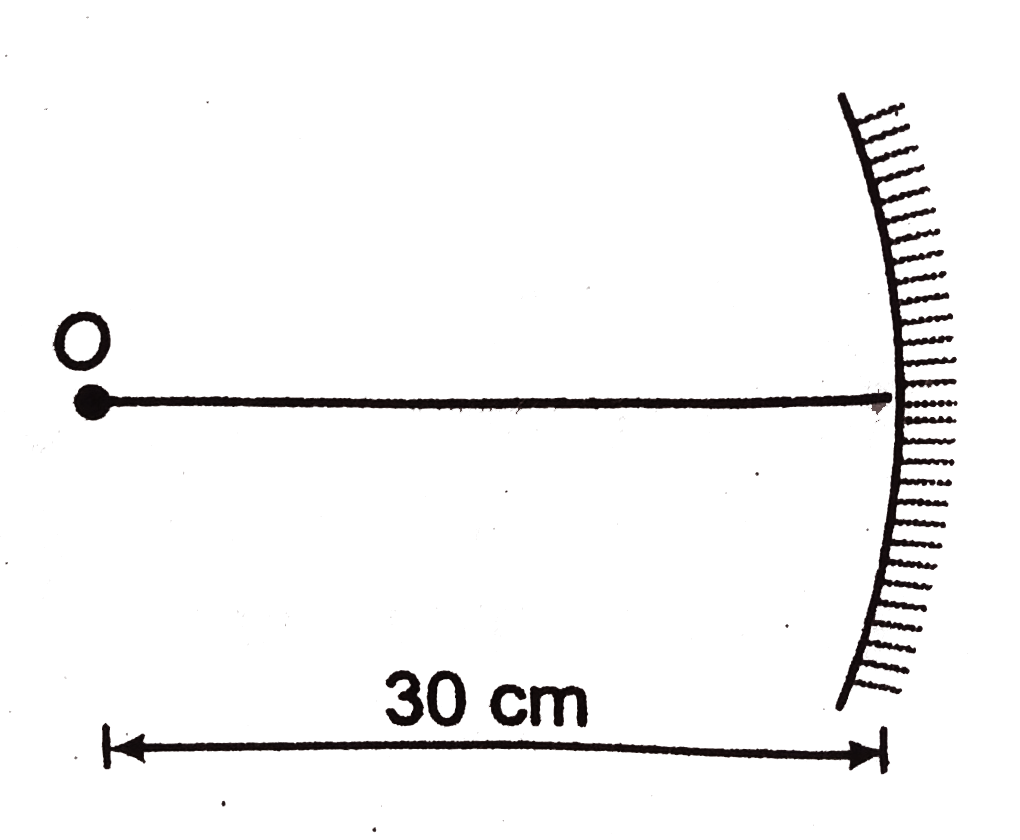A point object O is placed on the principal axis of a convex lens of focal length 10 cm at 12 cm from the lens. When object is displaced 1mm along the principal axis magnitude of displacement of image is x1. When the lens is displaced by 1mm perpendicular to the principal axis displacement of image is x2 in magnitude. find the value of x1x2
The correct Answer is:5
To solve the problem, we need to analyze the displacement of the image when the object is displaced along the principal axis and when the lens is displaced perpendicular to the principal axis. We will use the lens formula and the concept of magnification.
Step 1: Understand the lens formula
The lens formula is given by:
1f=1v−1u
where:
- f is the focal length of the lens,
- v is the image distance,
- u is the object distance.
Step 2: Calculate the initial image distance
Given:
- Focal length f=10cm
- Object distance u=−12cm (negative because the object is on the same side as the incoming light)
Using the lens formula:
110=1v−1−12
Rearranging gives:
1v=110+112
Finding a common denominator (60):
1v=660+560=1160
Thus:
v=6011≈5.45cm
Step 3: Displacement of the object
When the object is displaced by Δu=1mm=0.1cm, the new object distance becomes:
u′=−12+0.1=−11.9cm
Step 4: Calculate the new image distance
Using the lens formula again:
1f=1v′−1u′
Substituting the new object distance:
110=1v′−1−11.9
Rearranging gives:
1v′=110+111.9
Finding a common denominator (119):
1v′=11.9119+10119=21.9119
Thus:
v′=11921.9≈5.43cm
Step 5: Calculate the displacement of the image
The displacement of the image when the object is displaced is:
x1=v′−v≈5.43−5.45=−0.02cm=−0.2mm
Step 6: Displacement of the lens
When the lens is displaced by Δd=1mm perpendicular to the principal axis, the new image distance is calculated by considering the new position of the lens. The effective object distance remains the same, but the image distance will change due to the lens displacement.
Step 7: Calculate the new image distance
The new image distance will be:
v′′=v+Δd⋅vf=5.45+1⋅5.4510=5.45+0.545=5.995cm
Step 8: Calculate the displacement of the image
The displacement of the image when the lens is displaced is:
x2=v′′−v≈5.995−5.45=0.545cm=5.45mm
Step 9: Calculate the ratio x1x2
Now, we can find the ratio:
x1x2=−0.2mm5.45mm=−0.25.45≈−0.0367
Final Result
The value of x1x2 is approximately −0.0367.
---
The lens formula is given by:
1f=1v−1u
where:
- f is the focal length of the lens,
- v is the image distance,
- u is the object distance.
Given:
- Focal length f=10cm
- Object distance u=−12cm (negative because the object is on the same side as the incoming light)
110=1v−1−12
Rearranging gives:
1v=110+112
Finding a common denominator (60):
1v=660+560=1160
Thus:
v=6011≈5.45cm
When the object is displaced by Δu=1mm=0.1cm, the new object distance becomes:
u′=−12+0.1=−11.9cm
Using the lens formula again:
1f=1v′−1u′
Substituting the new object distance:
110=1v′−1−11.9
Rearranging gives:
1v′=110+111.9
Finding a common denominator (119):
1v′=11.9119+10119=21.9119
Thus:
v′=11921.9≈5.43cm
The displacement of the image when the object is displaced is:
x1=v′−v≈5.43−5.45=−0.02cm=−0.2mm
When the lens is displaced by Δd=1mm perpendicular to the principal axis, the new image distance is calculated by considering the new position of the lens. The effective object distance remains the same, but the image distance will change due to the lens displacement.
The new image distance will be:
v′′=v+Δd⋅vf=5.45+1⋅5.4510=5.45+0.545=5.995cm
The displacement of the image when the lens is displaced is:
x2=v′′−v≈5.995−5.45=0.545cm=5.45mm
Now, we can find the ratio:
x1x2=−0.2mm5.45mm=−0.25.45≈−0.0367
The value of x1x2 is approximately −0.0367.
Topper's Solved these Questions
Similar Questions
A thin linear object of size 1mm is kept along the principal axis of a convex lens of focal length 10cm. The object is at 15cm from the lens. The length of the image is:
View SolutionAn object is placed on the principal axis of concave mirror of focal length 10 cm at a distance of 8.0 cm from the pole. Find the position and the nature of the image.
View Solution
Knowledge Check
A convex lens of focal length 15 cm is placed on a plane mirror. An object is placed at 30 cm from the lens. The image is
Areal, at 30 cm in front of the mirrorBreal, at 30 cm behind the mirrorCreal, at 10 cm in front of the mirrorDvirtual, at 10 cm behind the mirror
An object is placed at a distance of 12 cm from a convex lens of focal length 8 cm. Find :
nature of the image
View SolutionAn extended object of size 2mm is placed on the principal axis of a converging lens of focal length 10cm. It is found that when the object is placed perpendicular to the principal axis the image formed is 4mm in size. The size of image when it is placed along the principal axis is ____________ mm.
View SolutionA light ray travelling parallel to the principal axis of a convex lens of focal length 12 cm strikes the lens at a height of 5 mm from the principal axis. What is the angle of deviation produced?
View SolutionAn object is placed at a distance of 12 cm from a convex lens of focal length 8 cm. Find :
the position of the image
View SolutionWhere should an object be kept on the principal axis of a convex lens of focal length 20 cm, in order to get an image, which is double the size of the object?
View SolutionA point object is placed on the principal axis of a concave mirror of focal length 20 cm. At this instant object is given a velocity v towards the axis (event-I) or perpendicular to axis (event-2). Then, speed of image

View SolutionAn illuminated object is placed on the principal axis of a converging lens so that real image is formed on the other side of the lens. If the object is shifted a little,
View Solution
